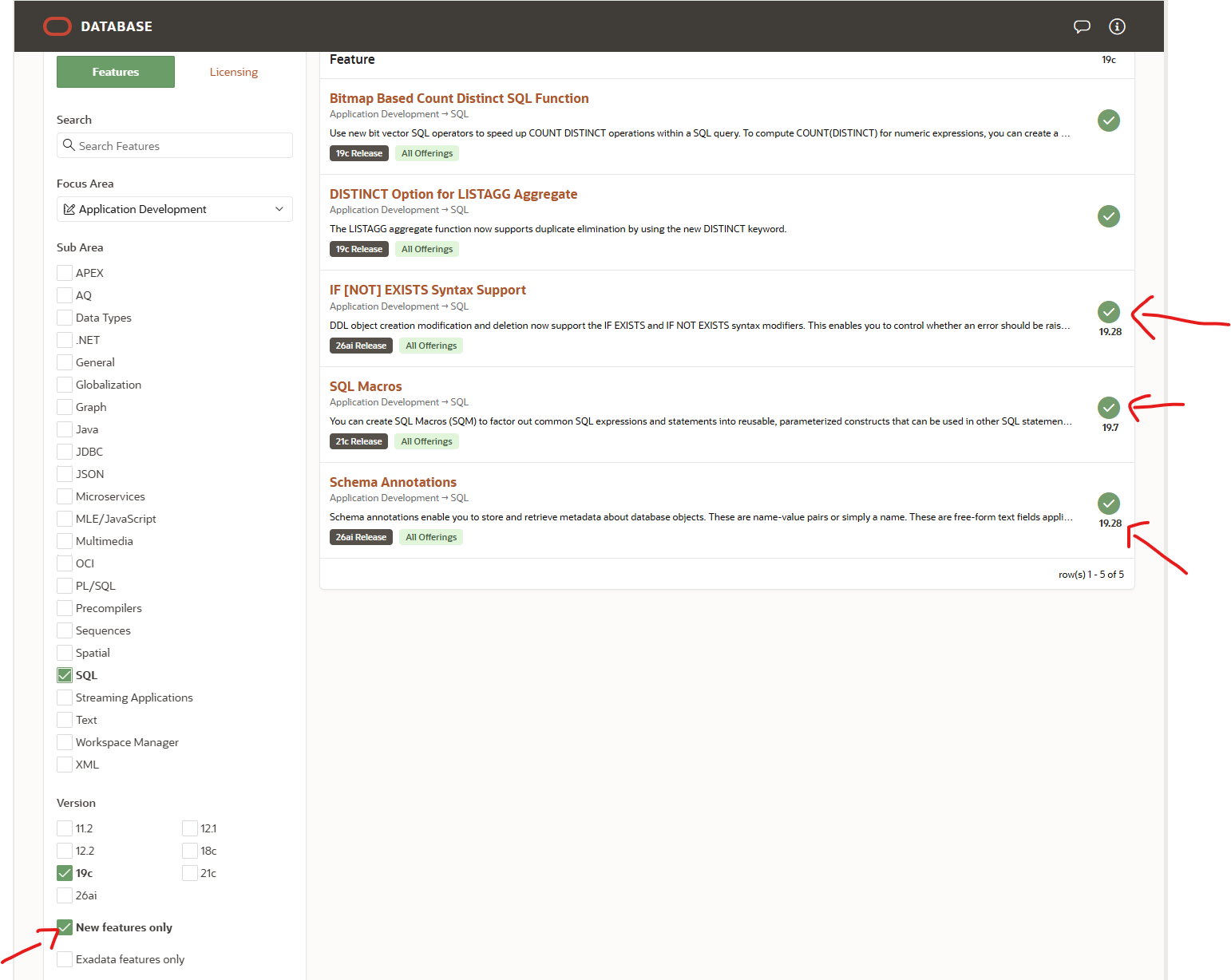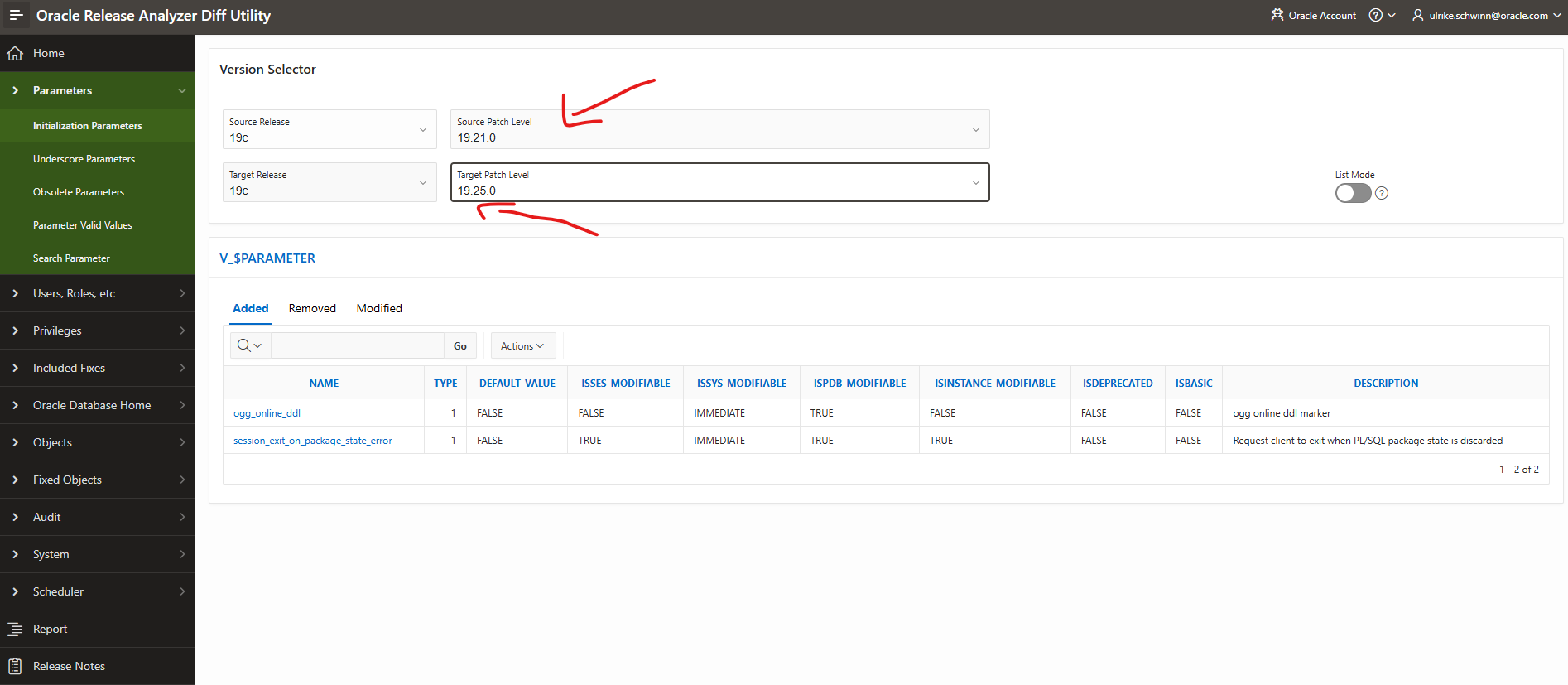What are the new features introduced with the Oracle Database Release Updates (RUs)? Which new features have been made available to Oracle Database 19c? And which are the differences between database releases? These questions are frequently asked by our partners and customers.
Release Updates (RUs) are available quarterly in January, April, July, and October. It is important to note that RUs are designed to provide timely access to both security-related bug fixes and other critical updates for each database version. For the most current Database Release Updates and associated bundle patches, please refer to the Primary Note for Database Quarterly Release Updates (Doc ID 888.1). For details regarding the database release roadmap, including various releases and supported versions, consult the Release Schedule of Current Database Releases (Doc ID 742060.1). For our followers, the latest updates are provided in our Oracle Database Monthly News issue, which can be accessed through the quick links posted every last Friday of the month.
How can I find information about new features in the release updates (RU)?
In general, there are the following options:
- New Features Guides for
- Release 19c: New Features in 19c Release Updates (Database New Features Guide Chapter 2)
- Release 21c: New Features in 21c Release Updates (Database News Features Guide Chapter 8)
- Release 26ai: Appendix A: Oracle AI Database 26ai Release Updates (Oracle AI Database New Features Chapter 13)
- Oracle AI Vector Search Updates: What’s New for Oracle AI Vector Search AI (Oracle AI Vector Search User’s Guide Chapter 1)
- Features and Licensing Application
The Database New Features Guides outline new features by release updates and provide links to the relevant documentation. Below are several examples of features from various release updates and datatabse versions.
Appendix A: Oracle AI Database 26ai Release Updates
- Release Update 23.26.0 Features
- Release Update 23.9 Features
-
Compile-Time Syntax Checking for JavaScript Procedures and Functions
-
Multilingual Engine Supports Database-Resident Connection Pools
-
JSON to Duality Migrator: Schema Inference using JSON Schema
-
Partition Maintenance Operations and Direct Load with Global IVF and HNSW Indexes (more AI Vector Search Features below)
-
IVF Index Online Reorganization (more AI Vector Search Features below)
-
- Release Update 23.8 Features
- Release Update 23.7 Features
- Release Update 23.6 Features
- Release Update 23.5 Features
AI Vector Search Features from Oracle AI Vector Search User’s Guide
- Release Update 23.9
- Release Update 23.8
- Release Update 23.7
- Release Update 23.6
- Release Update 23.5
Release 19c
- Release Update 19.23 Features
- Release Update 19.22 Features
- Release Update 19.21 Features
- Release Update 19.20 Features
- Release Update 19.18 Features
- Release Update 19.16 Features
- Release Update 19.12 Features
- Release Update 19.11 Features
- Release Update 19.10 Features
- Release Update 19.9 Features
- Release Update 19.8 Features
- Release Update 19.7 Features
If there were any license revisions/changes, the information can normally be found in Database Licensing Information User Manual. For example, this is the case for the following 19c features:
- Automatic SQL Plan Management
Historically, this feature had some licensing restrictions limiting it to Exadata on-premises systems and ExaDB. However, its availability has been increased, so it’s now available in Oracle Database 19c Release Update 19.22 Enterprise Edition and Oracle BaseDB 23c BaseDB Enterprise Edition. - Oracle Machine Learning (formerly Advanced Analytics) no longer requires an extra cost license. See Oracle Database Insider blog post for more information.
If you would like to access this information through a website or application, please refer to Features and Licensing Application. In the screenshot below we selected the version (here 19c) and the field “New features only”. You receive all new features which are available in this release version including the information about the specific RU feature version. To narrow the result, you can filter on the field “Focus Area”.

There is also the utility called “Oracle Release Analyzer Diff Utility (ORAdiff),” which enables users to compare two database releases, regardless of whether they include patch bundles. You can access it with https://oradiff.oracle.com/. Below is a screenshot to provide you with an example.

Link Summary
- New Features in 19c Release Updates
- New Features in 21c Release Updates
- Appendix A: Oracle AI Database 26ai Release Updates
- What’s New for Oracle AI Vector Search AI
- Features and Licensing Application
- Oracle Release Analyzer Diff Utility (ORAdiff)
- How do find new features in Oracle Release Updates (RUs)? (Mike Dietrich)
